After commercial operations begin in 1997, annual production reaches 1,600 metric tons

The idea of commercial shrimp farming in Saudi Arabia was thought implausible by most in the early 1990s, when the board of directors of Saudi Fisheries Co. (SFC) decided to make a significant investment and establish the first commercial farm in the region. Commercial shrimp farming was well established in Asia and Latin America, but its potential as a profitable business in the Middle East was not seriously considered. Many aquaculture technocrats were doubtful about its technical and economic viability in the region. Foremost, the prevailingly high water temperatures (28 to 36 degrees-C) and salinities (41 to 44 ppt) were considered too harsh for viable shrimp farming.
Project development
Dwindling wild shrimp populations in the Persian Gulf and Red Sea, together with increasing domestic and international demand for shrimp, provided further support for development of the SFC project. The start-up was initially slow but steady, involving much experimentation and trials to arrive at the final design and operational methodology. A pilot phase began operating in 1995, and commercial operations began in 1997.
Farm location, description
The SFC Shrimp Farm is located at Al Horaidha, along the Red Sea coast 600 km south of Jeddah. The farm is designed, built, and operated following current, accepted responsible aquaculture principles. Meticulous efforts are taken in the operation of the farm to prevent any harmful impacts on the pristine environment of the area.
The farm comprises a total land area of 10 square km. The grow-out facilities include 60 ha of reservoirs, 108 ha of grow-out ponds, and 65 ha of effluent treatment ponds. Water is drawn from deep in the sea and brought to the farm through a canal, then pumped around the clock to reservoirs and gravity-fed through concrete canals to the grow-out ponds.
The 1-ha circular earthen grow-out ponds have central drainage. Ponds are built with transported soil to prevent seepage. The grow-out ponds are strongly aerated to maintain a circular current that pushes feed leftovers and feces to the center of the pond, where they are drained off. Pond effluents flow through underground discharge canals to depuration ponds.
Farm discharge is allowed to settle in the effluent treatment ponds, then further cleaned by growing different fish species in the depuration ponds, which helps remove excess nutrients. Various quality parameters are continuously monitored to ensure that only water of acceptable quality is returned to the sea.
Support facilities on the farm include an ice plant, a preprocessing plant, workshops, feed store, warehouses, housing for employees, and other support infrastructure. In addition, an area of 4 square km is earmarked for future project expansion.
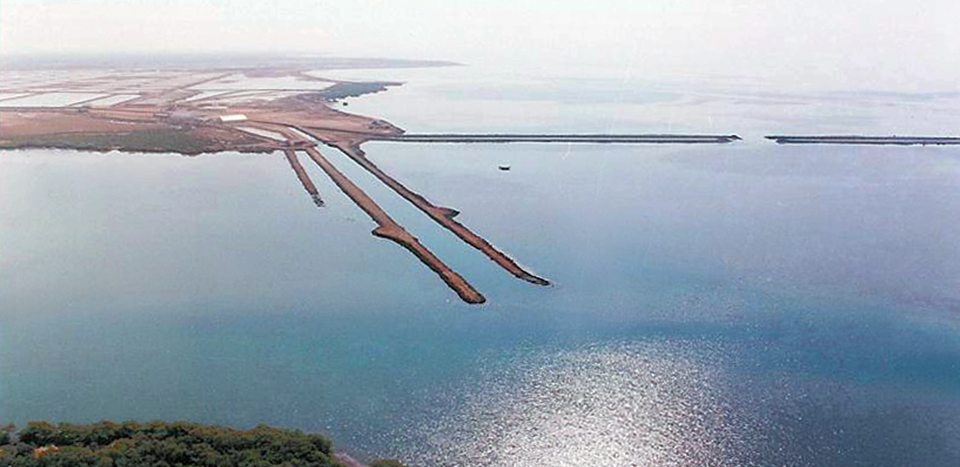
Species produced
The species currently cultured is the Indian white shrimp (Fenneropenaeus indicus), which is completely domesticated. Broodstock animals are reared separately, and an ongoing selection process is aimed at the genetic improvement of stocks. Black tiger shrimp (Penaeus monodon) were also produced, but discontinued due to the scarcity of wild broodstock.
Seedstock production
Two dedicated, Galveston-design hatcheries, each with a capacity of 80 million postlarvae (PL) per year, are located far from the grow-out area. Selected broodstock are brought to the hatcheries and induced to spawn. Eggs are collected, washed, and kept in special tanks for hatching.
The hatchery larval cycle is completed in 10 to 12 days, but the PL are grown in the hatchery for another 15 days before being transferred to the grow-out ponds. Various live feeds and formulated diets are used in the hatchery to feed the different larval stages. The hatcheries operate year-round to produce the high-quality seedstock required for the farm.
Pond management
The ponds are thoroughly prepared after each harvest. Stocking densities are typically 35 to 40 PL per square meter, and grow-out periods generally last 20 to 22 weeks. However, stocking densities and grow-out periods are adjusted based on prevailing conditions as well as desired harvest sizes.
Stocked animals are fed with specially formulated feeds following established feed management protocols. Pond water quality is monitored and recorded by a team of biologists, and regulated through exchange. Water entering the grow-out pond is filtered through screens of varying mesh sizes adjusted based on production stage to prevent the entry of predatory or competitor fish and other unwanted organisms. Shrimp are sampled weekly to assess their growth rate and general health.
Harvest and processing
On attaining the targeted harvest size, shrimp are harvested with nets after lowering the water level. Harvested shrimp are transferred immediately to the preprocessing plant to be washed in drinking-quality water, then quickly chill-killed and packed on ice for further transport to the processing plant. Yields average 7,500 kilograms per hectare per crop and annual production is 1,600 metric tons. Marketed in domestic as well as international markets, the product fetches premium prices.
Management and quality control
A team of experts professionally manage all aspects of the project to assure that profitability and project payback goals are achieved. In addition, SFC provides training and employment to many local employees at various technical and management levels.
No antibiotics or chemicals are used in the project, following its goal of long-term sustainability and environmental responsibility. Strict quality control is exercised in all project operations to ensure only the highestquality shrimp are produced.
Conclusion
Saudi Fisheries Co. is proud to be pioneering coastal aquaculture, a relatively new agribusiness, in the Middle East. Its success with one of the most modern shrimp farms in the world has inspired other investors in Saudi Arabia and other countries in the region, where other farms have been built and still more are planned.
(Editor’s Note: This article was originally published in the October 2003 print edition of the Global Aquaculture Advocate.)
Now that you've reached the end of the article ...
… please consider supporting GSA’s mission to advance responsible seafood practices through education, advocacy and third-party assurances. The Advocate aims to document the evolution of responsible seafood practices and share the expansive knowledge of our vast network of contributors.
By becoming a Global Seafood Alliance member, you’re ensuring that all of the pre-competitive work we do through member benefits, resources and events can continue. Individual membership costs just $50 a year.
Not a GSA member? Join us.
Author
-
Eng. Essam Abdulghani
Chief Executive Officer
Saudi Fisheries Co.
P.O. Box 6535
Dammam 31452
Kingdom of Saudi Arabia
Tagged With
Related Posts
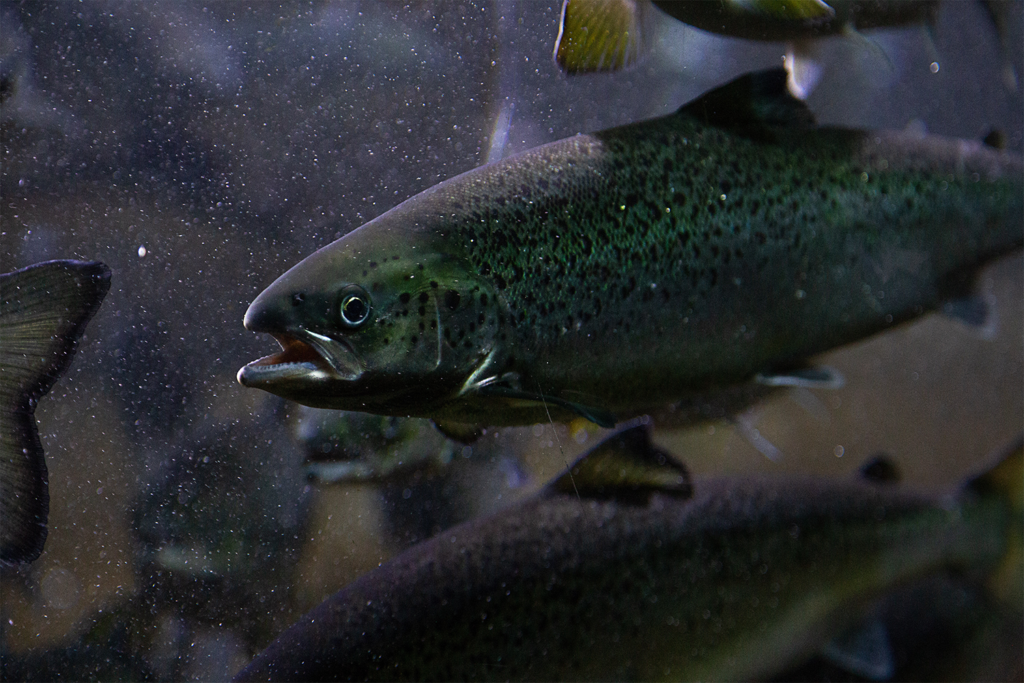
Innovation & Investment
A salmon farm in Dubai, because of course
Last year Dubai-based Fish Farm LLC sold the first batch of salmon to be born and bred in the United Arab Emirates. More are certainly coming.
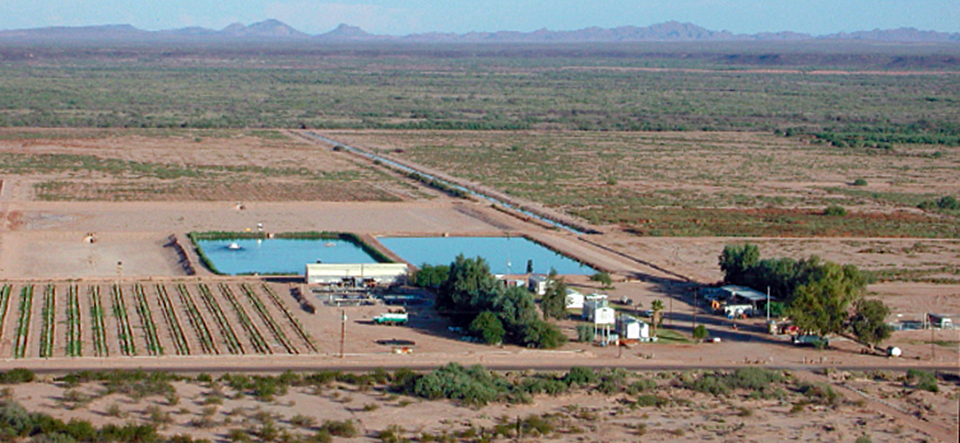
Health & Welfare
Dietary modifications for desert shrimp farming
Since the first pioneer shrimp farm was established in the area in 1997, desert shrimp farming in Arizona, USA, has expanded rapidly.
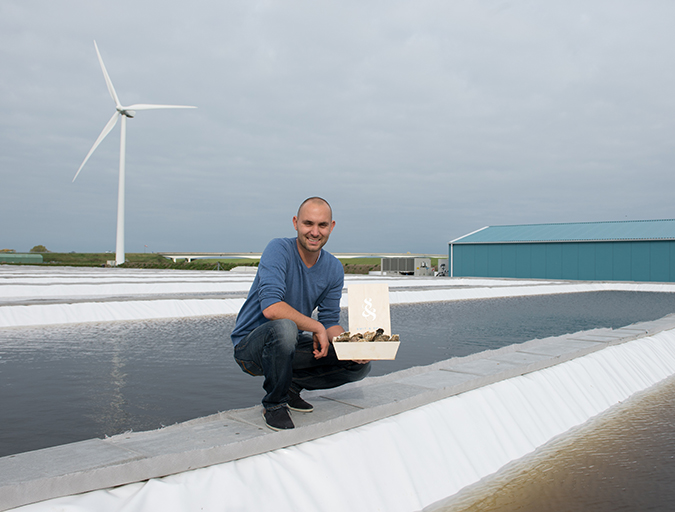
Intelligence
Dutch shellfish farmers bringing the sea onto land
Bivalve shellfish culture is a low-impact form of protein production, and in many cases is a net-positive for water quality. So why move it indoors? Smit & Smit in the Netherlands has a good argument for doing so.
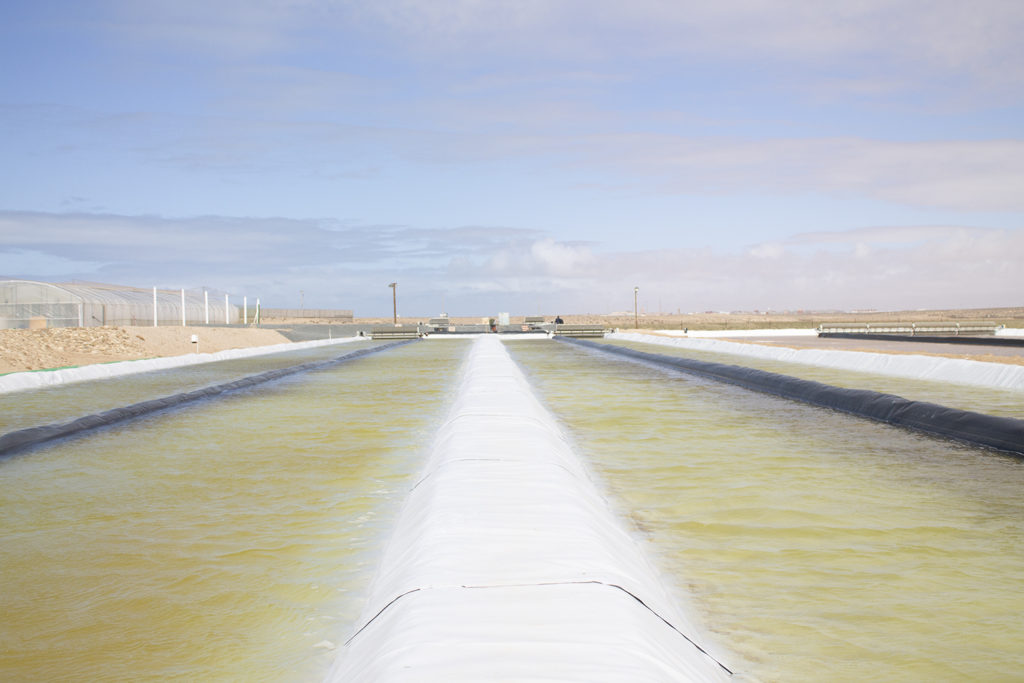
Aquafeeds
Sunlight, seawater and wind: A simple recipe for ambitious algae grower Susewi
Utilizing proven large-scale pond engineering, Susewi aims to become the world’s largest producer of algal biomass, with its sights set on aquafeeds.


